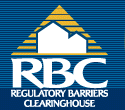Transit-Oriented Affordable Housing
According to a 2006 study, working families earning between $20,000 and $35,000 annually spend a substantial portion of their income on transportation, often trading shorter commutes for less expensive housing. To help reduce commuting costs and make housing "truly" affordable for low-income families, local jurisdictions are increasingly turning to transit-oriented developments (TODs) that incorporate affordable housing elements. This article will take a closer look at TODs and provide examples of communities that are making the case for such developments.
Developing Affordable Housing at TOD sites
TODs are mixed-use developments characterized by compact, high-density, and pedestrian-friendly design, located within close proximity of public transit facilities. Developing affordable housing at TOD sites can reduce transportation and housing costs for low-income families, and increase transit ridership to justify the infrastructure development costs of the TOD. Incorporating affordable housing within new TODs can also avoid displacement of existing low-income residents who may be forced to move due to rising land and housing prices.
While a number of cities are embracing TODs, there are many economic and regulatory issues one must consider in order to implement a successful project. Land prices, for example, are often comparatively high in locations with access to mass-transit, and building affordable housing in such locations is often deemed financially infeasible by many developers. In addition, zoning codes that restrict densities or include excessive parking requirements can also make affordable housing projects a challenge.
By providing incentives such as parking requirement reductions, density bonuses, and property tax abatements to encourage developers to build affordable housing within TODs, communities can increase the viability of such mixed-use, mixed-income projects. Here are a few examples of incentives provided by communities across the nation:
Parking Reductions: Ready access to public transportation and a lower vehicle-ownership rate among low-income households can reduce demand for parking spaces in transit-oriented affordable housing projects. Strategies such as reducing minimum parking requirements, allowing shared parking, and establishing maximum parking requirements for these projects can lower construction costs for developers. Los Angeles County, California allows a 40 percent reduction in parking requirements for new residential developments in certain TOD districts. The city of Minneapolis, Minnesota's zoning code allows reduced parking (up to 10 percent) for multifamily dwellings located within 300 feet of a transit stop.
Density Bonuses: The city of Woodinville, Washington allows a 10 percent increase above the zoning district's base density for developments located within one-quarter mile of transit routes with frequent service. The city also allows for the establishment of transit-oriented housing development overlay districts within its Central Business District Zone. TODs that provide onsite affordable housing are eligible for alternative development standards that allow increased densities.
Tax Incentives: In order to make TOD housing projects financially viable, the city of Portland, Oregon offers property tax exemptions for multi-unit residential developments located within designated TOD areas. Developments with 10 or more units are eligible for the 10-year property tax exemption, provided they meet the following affordability requirements set by the Portland city code:
-
Twenty percent of rental units should be affordable to households earning no more than 60 percent of the area median income (AMI) or 10 percent should be affordable to households earning no more than 30 percent of the AMI.
-
The rental units are to remain affordable for the duration of tax exemption plus an additional five years thereafter.
-
For-sale units should be sold to households earning no more than 100 percent of the AMI for a family of four.
Conclusion
A number of communities are investing in transit networks and embracing the concept of transit-oriented development as a way to promote smart, sustainable growth. Integrating affordable housing within TODs is of equal importance if communities are to avoid loss of housing affordability and displacement of existing low-income residents. With the help of development incentives like those described in this article, communities can increase the economic feasibility of transit-oriented projects and encourage developers to build housing that is "truly" affordable.
Next Article Search Archives
|


